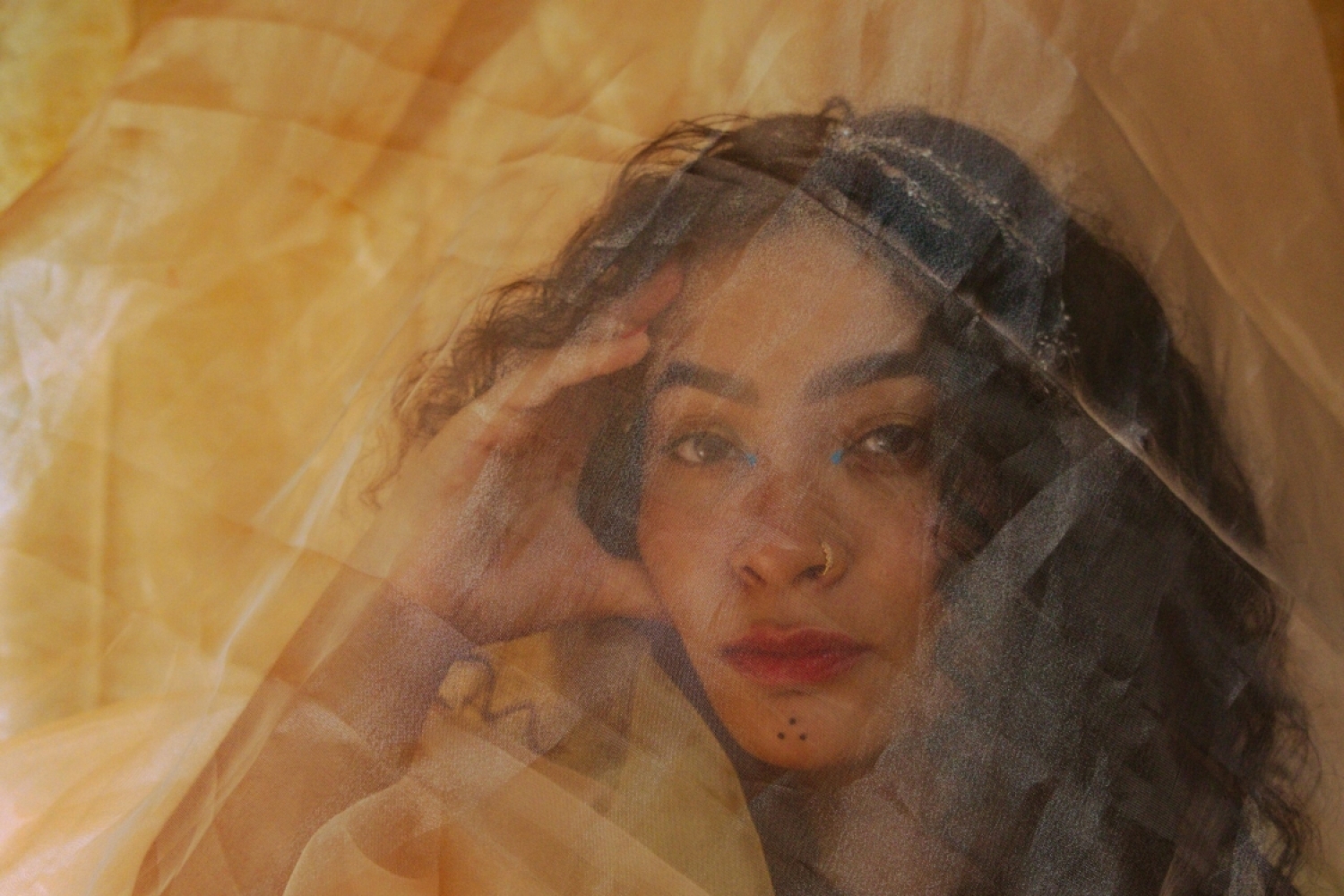

Ananya’s musical odyssey is a fusion of her nomadic upbringing, cultural heritage and unwavering passion for artistic expression. She is an army kid who found solace in music, connecting with her late father’s memory through ‘mixtapes’. Her journey led her from a brief foray into medicine to a profound realisation that her true calling was music.
Her creative roots trace back to childhood poetry and melodies, serving as a bridge to others’ emotions. Her compositions echo the spirituality of the Garhwal Himalayas and blend seamlessly with global influences in London, where she further honed her craft. Ananya’s artistry also extends into the realm of technology and sustainability, as seen through her Gaia’s Garden project, a testament to her commitment to marrying art and causes; a co-creation with five women from different disciplines who came together by their desire to create safe spaces that promote inclusive sustainability and interconnectedness in urban environments.
Collaborative ventures with diverse artists have enriched her growth, expanding her musical repertoire across genres. Projects like Mantras for Maidenhood and Whispers of Un/Becoming delve into identity and empowerment through a blend of audio-visual experiences and tactile installations.
The pandemic prompted a return to poetry, sparking an experimental phase that reshaped her artistic direction. As a researcher in Artificial Intelligence and Musical Co-creativity, she envisions responsible AI integration in music, emphasising ethical application to empower artists globally. With a multilingual approach, Ananya’s music transcends cultural boundaries, inviting listeners to a cross-cultural dialogue. Her journey is a symphony of resilience, cultural fusion, and the transformative essence of art, as she continues to carve a distinct path in the musical landscape, captivating audiences with her immersive narratives and experimental creativity.
Your journey from the Garhwal Himalayas to London is quite remarkable. How has this diverse background influenced your unique blend of musical genres?
Himalayan cultures are rich and unique in their artistry and performance. Whether it is language, instrumentation, or delivery; aspects of Garhwal that emerge most recognisably in my work are our folk storytelling traditions, many of which are rooted in spirituality and reverence for the natural world. I carry the serenity of the mountains with me through folk melodies which are mostly passed down orally. With just around two lakh, seventy nine and a half thousand speakers of this endangered language, I find it important to infuse its essence into my contemporary music. These roots, alongside all the musical and cultural influences, I have lived with across the years, melt together in London, where I further hone my craft, merging all these elements to create music that represents not only myself but also finds its place in the vibrant global music scene.
Your spoken word poetry is beautifully paired with intricate soundscapes. Can you share more about your creative process and how you find the right balance between words and music?
Music holds this incredible power — it not only colours our experiences but also shapes how we interact with lyrical prose. This guides my compositional choices, driving a fundamental question: do I want to draw listeners into my personal realm or provide the auditory freedom to forge their own? This underpins my process when working with poetry and soundscapes.
For my latest release When the Purest Magic Breaks, I wanted to explore the musical counterpart of the written word through the notion of space. Silence is a powerful component of sound. The composition revolves around its transformation, meticulously crafting repeated motifs that eventually dissolve and remain suspended, sometimes unresolved.
The intent? To offer listeners ample room for their inner world to unfurl, as layers of sonic building blocks spark their own creative landscapes. The piece’s minimalist approach and gradual progression, achieved through careful sound design, interwoven classical strings and layered vocals, converge to encapsulate the experience of grappling with grief in limbo. What mattered most to me was the seamless connection between music and lyrics. I wanted to sidestep the practice of a spoken word performance layered over a pre-produced instrumental track. In this piece, each measure of the music is treated as poetry itself, woven through and with the spoken word. The balance between the two though, will always be subject to interpretation. For me, I approach it by being certain of the emotional landscape I wish listeners to explore and make their own. I build it through a cathartic process of play and experimentation in my sonic playground.
When The Purest Magic Breaks seems to explore themes of transformation and healing. Could you elaborate on how your personal experiences led to the creation of this evocative piece?
Absolutely, the catalyst for When the Purest Magic Breaks emerged from a place of introspection. The lockdowns during the pandemic reshaped my creative landscape as I found myself confined within the walls of my room in London, unable to travel back home to India and unsure if I could ever perform music live again. The world as we knew it was falling apart outside and those, who could afford safety indoors, were forced to confront all that might have gone unfelt and unseen in the pre-pandemic pursuit of achievement and productivity. The stillness in those solitary moments became a vessel through which I navigated healing and self-discovery while tending to a broken heart. I wrote this piece inspired by the ordinary beauty of as peck of dust suspended in the air. It glittered like gold in the fading afternoon sun and reminded me of the fragility and resilience that coexists within us when we find ourselves in limbo.
This is an all exclusive excerpt from our Bookazine. To read the entire article, grab your copy here.
Words Hansika Lohani
Date 11-05-2024